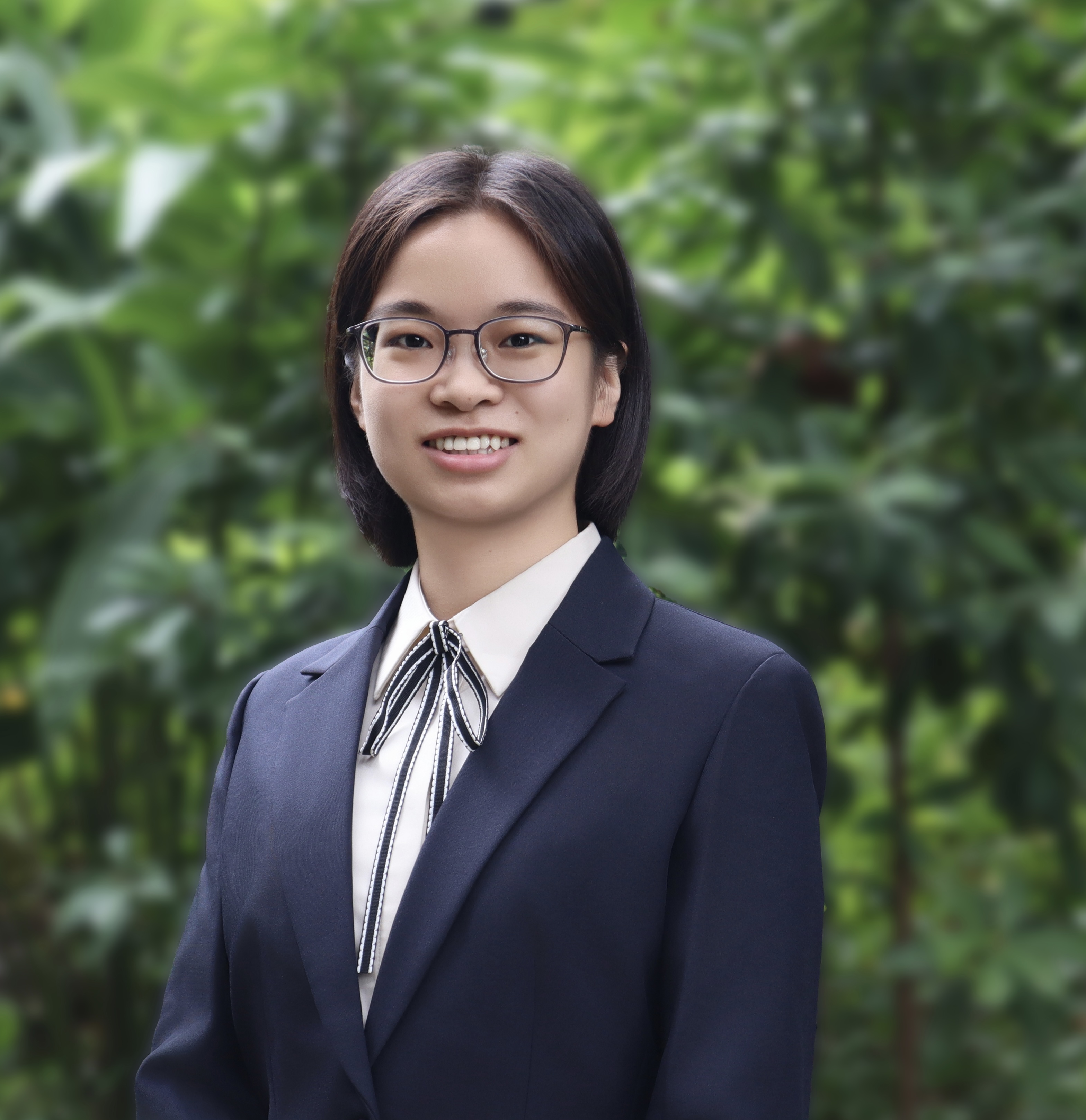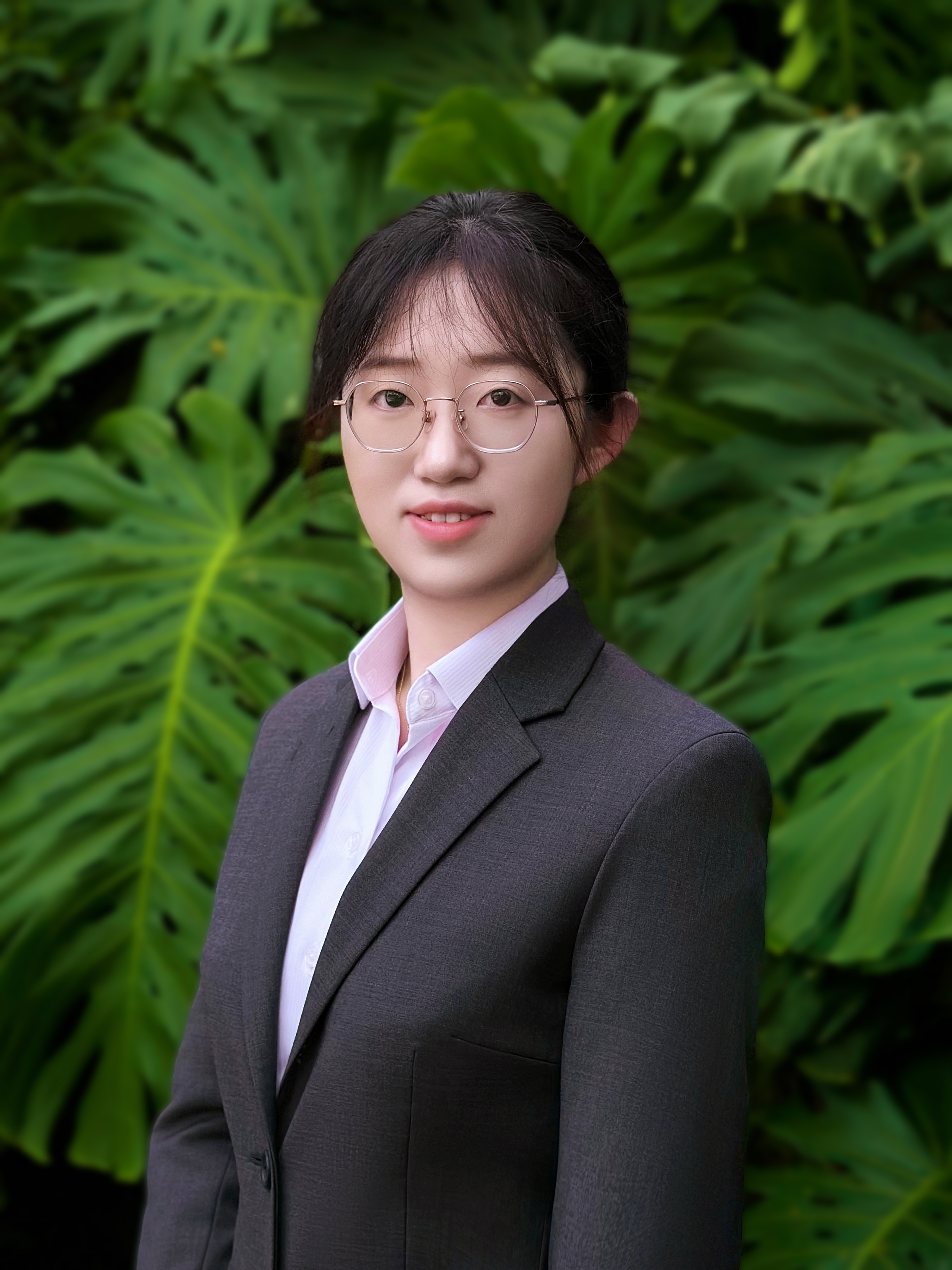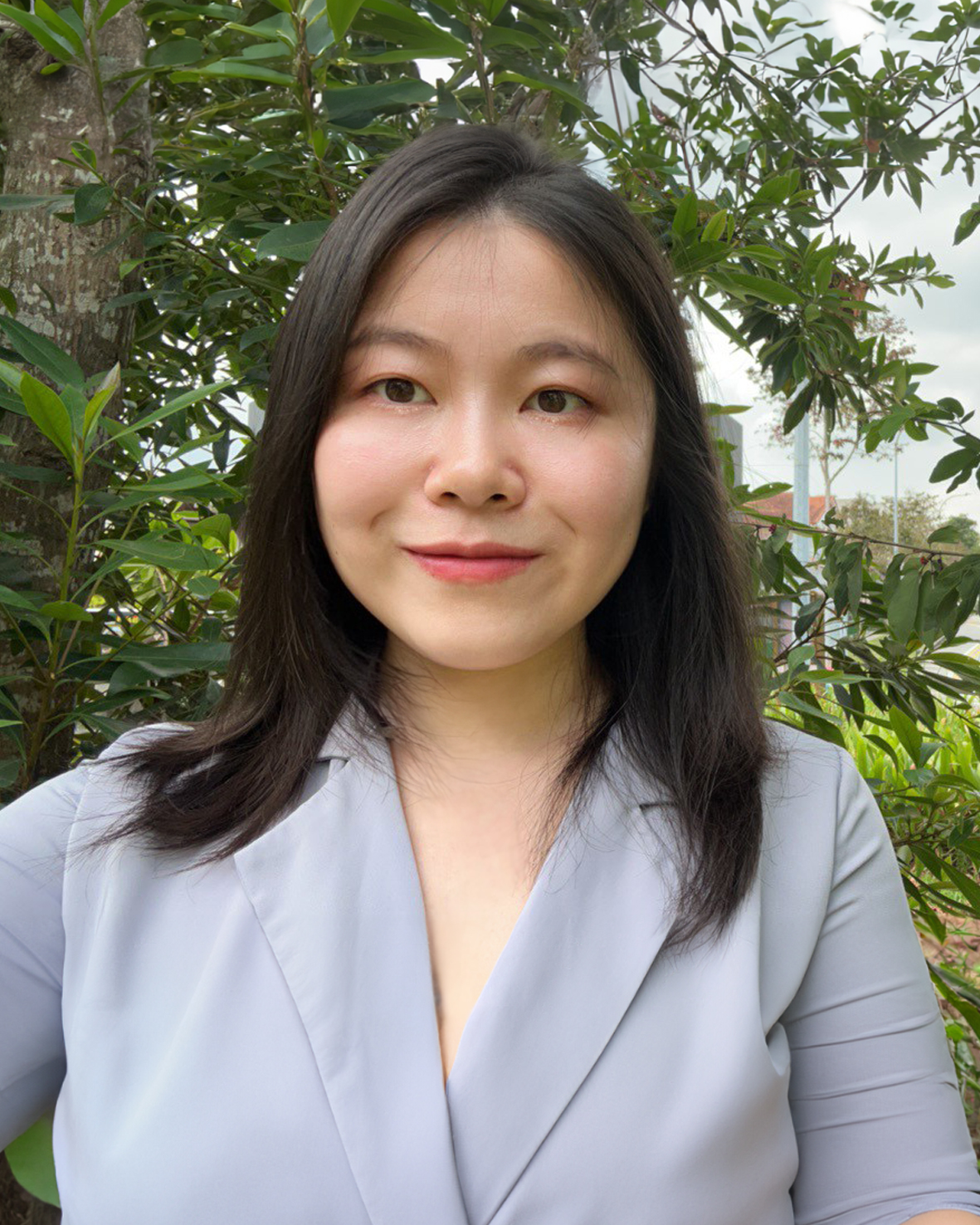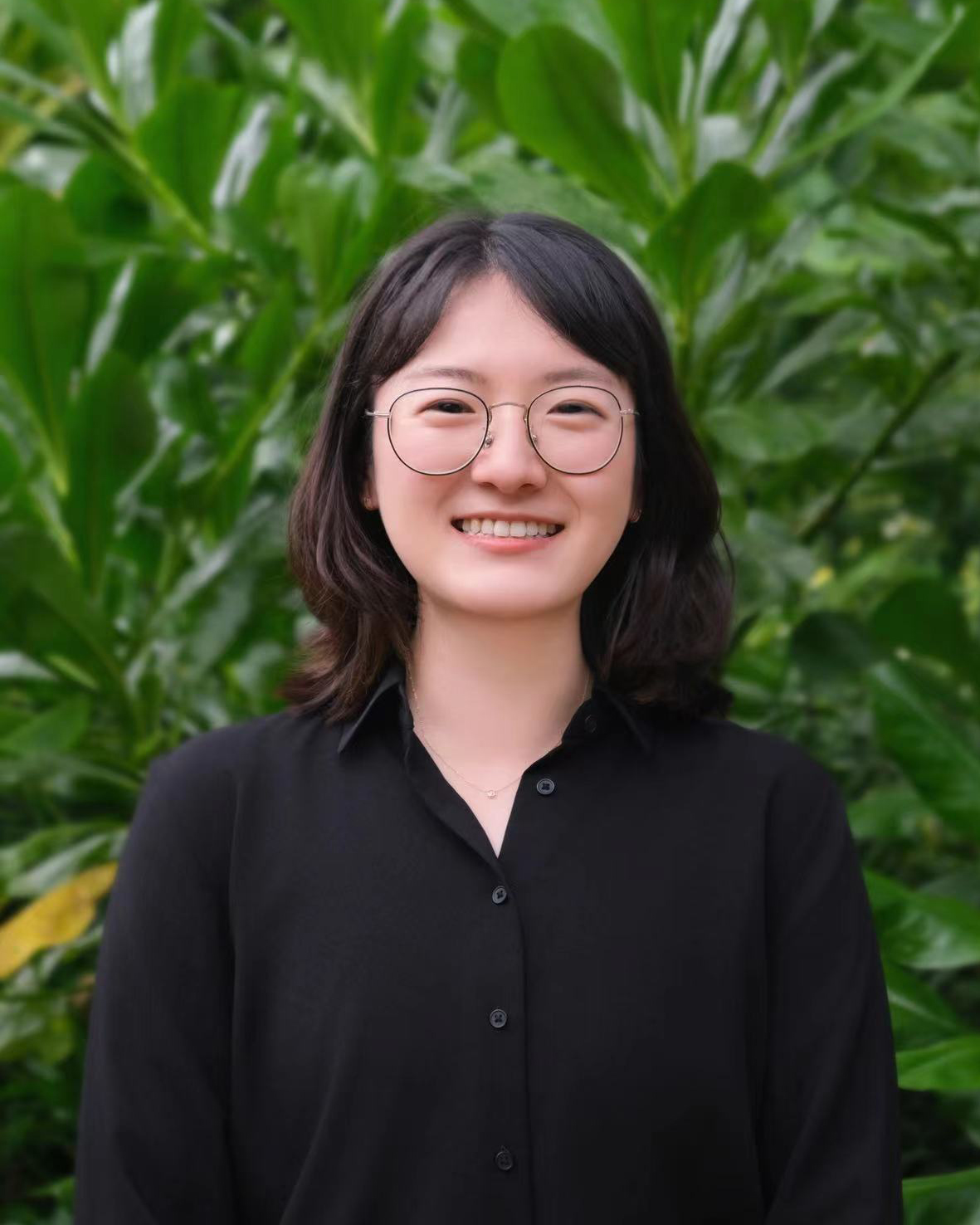ZHU XIAOFAN
Ph.D Candidate in Economics
I am a job market candidate and I will be available for interviews.
REFERENCES
Professor Fali Huang
Email: flhuang@smu.edu.sg
Tel: +65 68280859
Professor Sunha Myong
Email: sunhamyong@smu.edu.sg
Tel: +65 68281914
WORKING PAPERS
“Educational Decisions in the Shadow of Cronyism: An Empirical Study of College Graduates in
China”, with Chen Xiang (Job Market Paper)
This study investigates how inefficient political institutions, marked by rampant corruption and cronyism, shape students’ educational choices based on their family’s political connections. We exploit the onset of China’s anti-corruption campaign and compare the educational choices of college students with at least one cadre parent versus those without, from more corrupt regions versus less corrupt regions, before and after the campaign. We find that after the campaign, college students with at least a cadre parent from regions previously characterised by higher corruption levels are more likely to pursue further education after graduation. The effects are more pronounced for male students, for students with liberal art track majors, for students with lower academic performance during college, and for students with cadre parents with higher positional ranks. Moreover, we examine the underlying mechanisms and find evidence of a more equitable post-campaign employment environment, where connected students need stronger educational qualifications and more human capital stock to remain competitive against their unconnected
counterparts.
WANG YUTAO
Ph.D Candidate in Economics
I am a job market candidate and I will be available for interviews.
REFERENCES
Professor Christine Ho
Email: christineho@smu.edu.sg
Tel: +65 68085173
Professor Tomoki Fujii
Email: tfujii@smu.edu.sg
Tel: +65 68280279
WORKING PAPERS
“Social Institutions and Low Birth Rates”, with Christine Ho (Job Market Paper)
We document three cross-sectional stylized facts on labor supply and family formation. First, female labor force participation (LFP) and fertility rates are much lower in Eastern societies compared to Western economies. Second, labor hours and the gender-pay gap are much higher in the East than in the West. Third, parents spend very high amounts of time and money per child in Eastern societies. To account for these features, we develop and estimate a rich heterogeneous-agent model with endogenous marriage, fertility, labor supply, and time and money investment in children. Estimates using data from South Korea and the United States highlight the importance of gender norms and long work hours practices in driving down female LFP while child quality mores drive down fertility in South Korea. Our results suggest that a multi-pronged policy approach or reductions in the gender-pay gap may help boost both female LFP and fertility in East Asia.
RESEARCH PAPERS
“Family Size and Child Migration: Do Daughters Face Greater Trade-Offs than Sons?”, with Christine Ho and Sharon Xuejing Zuo
We show that, conditional on family size, rural boys and girls are equally likely to migrate with parents in China. Nevertheless, daughters’ migration may still be compromised because they tend to have more siblings in societies with strong son preference, and larger families are more likely to leave all children behind. We find that a one unit increase in sibship size decreases the probability that a daughter migrates by 12.5 percentage points—with stronger effects when migration restrictions are more stringent—but has negligible effects on sons. The results suggest that gender-neutral migration constraints may generate gendered family size trade-offs.

WANG KEXIN
Ph.D Candidate in Economics
I am a job market candidate and I will be available for interviews.
REFERENCES
Professor Jiangtao Li
Email: tli@smu.edu.sg
Tel: +65 68261351
Professor Wei He
Email: hewei@cuhk.edu.hk
Tel: (852) 3943-8196
Professor Jingyi Xue
Email: jyxue@smu.edu.sg
Tel: +65 68085466
Professor Tilman Börgers
Email: tborgers@umich.edu
Tel: +-1-734-764 8022
WORKING PAPERS
"Robust Contracting under Distributional Uncertainty", with Jiangtao Li (Job Market Paper)
We study the design of contracts when the principal has limited statistical information about the output distributions induced by the agent’s actions. In the baseline model, we consider a principal who only knows the mean of the output distribution for each action. The mean restrictions allow for large set of profiles of output distributions, including some extreme output distributions that can be used to establish the robust optimality of monotone affine contracts. Motivated by this, we study the set of distributions that can be used to establish the robust optimality of the monotone affine contracts. This facilitates the understanding for the use of monotone affine contracts in settings with more restrictions on the output distributions. Our main result shows that the optimality of monotone affine contracts persists even if the principal has access to other information about the output distributions, such as the information that the output distribution induced by each action has full support.
RESEARCH PAPERS
"A Robust Optimization Approach to Mechanism Design", with Jiangtao Li
We study the design of mechanisms when the mechanism designer faces local uncertainty about agents’ beliefs. Specifically, we consider a designer who does not know the exact beliefs of the agents but is confident that her estimate is within ε of the beliefs held by the agents (where ε reflects the degree of local uncertainty). Adopting the robust optimization approach, we design mechanisms that incentivize agents to truthfully report their payoff-relevant information regardless of their actual beliefs. For any fixed ε, we identify necessary and sufficient conditions under which requiring this sense of robustness is without loss of revenue for the designer. By analyzing the limiting case in which ε approaches 0, we provide two rationales for the widely studied Bayesian mechanism design framework.
“Interim Regret Minimization”, with Wei He, Jiangtao Li
We consider a robust version of monopoly pricing when the seller only knows the bound on valuations and the mean of the distribution of the buyer’s value. The seller seeks to minimize interim regret, the forgone expected revenue due to not knowing the distribution of the buyer’s value. The optimal pricing policy randomizes over a range of prices; the support of the pricing policy is bounded away from zero.
“Undominated Mechanisms”, with Tilman Börgers, Jiangtao Li
We study the design of mechanisms when the designer faces multiple plausible scenarios and is uncertain about the true scenario. A mechanism is dominated by another if the latter performs at least as well in all plausible scenarios and strictly better in at least one. A mechanism is undominated if no other feasible mechanism dominates it. We show how analyzing undominated mechanisms could be useful and illustrate the tractability of characterizing such mechanisms. This approach provides an alternative criterion for mechanism design under uncertainty, complementing existing methods.
“Optimal Multiperiod Allocation with Costly Verification”
We study the optimal design of mechanisms in which the principal is to allocation goods to an agent over two periods. In each period, the principal can verify the agent’s private information at a cost, but monetary transfers are not allowed. In particular, we consider that the agent’s private value for a good is either high or low in each period. And the values are independent and identically distributed over two periods. In our main results, we first show that it is always suboptimal to check the agent’s information for sure in the first period when he reports the high value. This contrasts with the optimality for the static allocation problem that has been studied in Ben-Porath, Dekel, and Lipman (2014), in which verifying the high value with probability one maximizes the principal’s expected payoff when certain conditions are satisfied. Second, we explicitly solve out the optimal mechanisms, which strongly depend on the choice of model parameters, including the valuations, the verification cost as well as the value distributions. We also discuss the optimal mechanisms when the agent’s values exhibit two extreme correlation structures, which are maximal positive correlation or maximal negative correlation.

SONG YUNLONG
Ph.D Candidate in Economics
I am a job market candidate and I will be available for interviews.
REFERENCES
Professor Lin Ma
Email: linma@smu.edu.sg
Tel: +65 68280876
Professor Yuan Mei
Email: yuanmei@smu.edu.sg
Tel: +65 68085212
Professor Jing Li
Email: lijing@smu.edu.sg
Tel: +65 68085454
Professor Yang Tang
Email: tangyang@ntu.edu.sg
Tel: +65 6790 6115
WORKING PAPERS
"Physical and Human Capital Accumulation in a Spatial Economy", with Lin Ma and Yang Tang (Job Market Paper)
We study how production factor accumulations in space respond to economic shocks and how those responses modify the aggregate and distributional impacts of shocks. To examine their responses and implications, we develop a dynamic spatial model that incorporates capital accumulation and skill acquisition. Focusing on China’s trade liberalization and infrastructure expansion in the early 2000s, we show that allowing for capital accumulation amplifies welfare gains and intensifies inequality across skill types, while skill acquisition attenuates impacts on skill premiums by balancing skill supply in response to shocks. Our findings also highlight the critical role of capital-skill interactions in shaping aggregate and spatial impacts, suggesting that both capital and skill adjustments are essential to understanding the full impacts of economic shocks on welfare and inequality.
RESEARCH PAPERS
"The Spatial General Equilibrium Impacts of Inward FDI", with Lin Ma
We study the spatial general equilibrium impacts of inward FDI using a dynamic spatial model with capital being allowed to move across borders. Focusing on China, we explicitly estimate FDI barriers at prefectural level, FDI elasticity, and FDI knowledge spillover elasticity. Using IV constructed from China’s early 2000s FDI policy liberalization, we find a positive knowledge spillover of inward FDI. In quantitative analysis, we show that inward FDI has a substantial positive impact on welfare in China due to FDI knowledge spillover, with coastal cities gaining more. We also explore the role of local FDI barriers in explaining regional inequality in China: eliminating the barriers reduces China’s regional inequality but also decreases its total income.

REN YUEXUAN
Ph.D Candidate in Economics
I am a job market candidate and I will be available for interviews.
REFERENCES
Professor Jia LI
Email: jiali@smu.edu.sg
Tel: +65 68280707
Professor Yichong Zhang
Email: yczhang@smu.edu.sg
Tel: +65 68280881
Professor Peter C.B. Phillips
Email: peterphillips@smu.edu.sg
Tel: +65 68280865
Professor Jun Yu
Email: junyu@um.edu.mo
Tel: +853 8822-4716
WORKING PAPERS
"Conformal Prediction for High-Frequency Event Studies" (Job Market Paper)
We propose using a conformal predictive analysis for high-frequency event studies. Unlike existing literature, we recast the inference problem of cumulative abnormal return (CAR) as a counterfactual prediction problem for cumulative return. The general continuous-time model for spot regression can be approximated by a linear regression model with independent and stable-distributed random variables under the fixed-k asymptotic setting, thereby establishing the asymptotic validity of the conformal prediction interval. Extending the theory to incorporate a counterfactual model with many control units, the proposed prediction interval remains valid when using the synthetic control estimator. An intraday event study of AMD’s conference session illustrates the empirical application.
RESEARCH PAPERS
"Robust Inference for Spot Regressions", with Tim Bollerslev, Jia Li and Ulrich Müller.
“A Robust test of Tracking Performance for Leveraged ETFs”, with Tim Bollerslev, Jia Li and Ulrich Müller
PUBLICATION
"Optimal Inference for Spot Regressions.", with Bollerslev, Tim, Jia Li, and Yuexuan Ren, American Economic Review, 114 (3): 678-708, 2024

PAULO DANIEL SALLES RAMOS
Ph.D Candidate in Economics
I am a job market candidate and I will be available for interviews.
REFERENCES
Professor Shurojit CHATTERJI
Email: shurojitc@smu.edu.sg
Tel: +65 68280314
Professor Jingyi XUE
Email: jyxue@smu.edu.sg
Tel: +65 68085466
WORKING PAPERS
"Compellingness in Nash Implementation", with Takashi Kunimoto and Shurojit Chatterji (Job Market Paper)
A social choice function (SCF) is said to be Nash implementable if there exists a mechanism in which every Nash equilibrium induces outcomes specified by the SCF. The main objective of this paper is to assess the impact of considering mixed strategy equilibria in Nash implementation. We call a mixed strategy equilibrium “uncompelling” if its outcome is strictly worse for any agent than that induced by the SCF. We show that if the finite environment and the SCF to be implemented jointly satisfy what we call Condition COM, we construct a finite mechanism which Nash implements the SCF in pure strategies and its any mixed strategy Nash equilibrium outcome is either uncompelling or consistent with the SCF. Our mechanism has several desirable features: transfers can be completely dispensable; only finite mechanisms are considered; integer games are not invoked; and agents’ attitudes toward risk do not matter. These features make our result quite distinct from many other prior attempts to handle mixed strategy equilibria in the theory of implementation.
RESEARCH PAPERS
"Minimum Reversals Domains: a link between median rules and monotonicity”, (revised and resubmitted at Games and Economic Behavior)
We show that any monotonic, anonymous, unanimous and tops-only rule defined on a MAT-connected domain must be a median voter rule on a tree. Moreover, a median voter rule on a tree is monotonic if and only if the domain is a minimum reversals domain, which is a weakening of known preference domains. These two results are combined to obtain a set of necessary and sufficient conditions for the existence of monotonic, anonymous, and unanimous rules on a MAT-connected domain.

LIM GUO WEI DENNIS
Ph.D Candidate in Economics
I am a job market candidate and I will be available for interviews.
REFERENCES
Professor Yichong ZHANG
Email: yczhang@smu.edu.sg
Tel: +65 68280881
Professor Jun YU
Email: yujun@smu.edu.sg
Tel: +65 68280858
Email: jiali@smu.edu.sg
Tel: +65 68280890
Professor Wenjie WANG
Email: wang.wj@ntu.edu.sg
Tel: +65 6316-8958
WORKING PAPERS
"A Valid Anderson-Rubin Test under Both Fixed and Diverging Number of Weak Instruments", (Job Market Paper)
The conventional and jackknife Anderson-Rubin (AR) Tests are developed separately to conduct weak-identification-robust inference when the number of instrumental variables (IVs) are fixed or diverging to infinity with the sample size, respectively. These two tests compare distinct test statistics with distinct critical values. To implement them, researchers first need to take a stance on the asymptotic behaviour of the number of IVs, which is ambiguous when this number is just moderate. Instead, in this paper, we propose two analytical weak-identificationrobust AR tests, both of which control asymptotic size whether the number of IVs are fixed or diverging. We further analyze the power properties of these uniformly valid AR tests under both cases.
RESEARCH PAPERS
"A Conditional Linear Combination Test with Many Weak Instruments"
We consider a linear combination of jackknife Anderson-Rubin (AR), jackknife Lagrangian multiplier (LM), and orthogonalized jackknife LM tests for inference in IV regressions with many weak instruments and heteroskedasticity. Following I.Andrews (2016), we choose the weights in the linear combination based on a decision-theoretic rule that is adaptive to the identification strength. Under both weak and strong identifications, the proposed test controls asymptotic size and is admissible among certain class of tests. Under strong identification, our linear combination test has optimal power against local alternatives among the class of invariant or unbiased tests which are constructed based on jackknife AR and LM tests. Simulations and an empirical application to Angrist and Krueger’s (1991) dataset confirm the good power properties of our test.
PUBLICATIONS
"A Conditional Linear Combination Test with Many Weak Instruments", with Zhang Yichong and Wang Wenjie, Journal of Econometrics, forthcoming

LI QIYUAN
Ph.D Candidate in Economics
I am a job market candidate and I will be available for interviews.
REFERENCES
Professor Jia LI
Email: jiali@smu.edu.sg
Tel: +65 68280890
Professor Jun YU
Email: yujun@smu.edu.sg
Tel: +65 68280858
Email: peter.phillips@yale.edu
Tel: (203) 432-3695
Professor Tim BOLLERSLEV
Email: tim.bollerslev@duke.edu
Tel: (919) 660-1846
WORKING PAPERS
"Uniform Inference for High-Frequency Data", (Job Market Paper)
We address the uniform inference problem for high-frequency data that includes prices, volumes, and trading ows. Such data is modeled with a general state-space framework, where latent state process is the corresponding risk indicators, e.g., volatility, price jump, average order size, and arrival of events. The functional estimators are formed as the collection of localized estimates across different time points. Although the proposed estimators do not admit a functional central limit theorem, a Gaussian strong approximation, or coupling, is established under in-fill asymptotics to facilitate feasible inference. We apply the proposed methodology to distinguish the informative part from the Federal Open Market Committee speeches, and to analyze the impact of social media activities on cryptocurrency markets.
RESEARCH PAPERS
“Optimal Nonparametric Range-Based Volatility Estimation”, with Tim Bollerslev and Jia Li, accepted in Journal of Econometrics.
We present a general framework for optimal nonparametric spot volatility estimation based on intraday range data, comprised of the first, highest, lowest, and last price over a given time interval. We rely on a decision-theoretic approach together with a coupling-type argument to directly tailor the form of the nonparametric estimator to the specific volatility measure of interest and relevant loss function. The resulting new optimal estimators offer substantial efficiency gains compared to existing commonly used range-based procedures.
PUBLICATIONS
“Permutation-based Tests for Discontinuities in Event Studies”, with Federico Bugni and Jia Li, Quantitative Economics, 14(1), 2023, 37-70.
“Seemingly Unrelated Regression Estimation for VAR Models with Explosive Roots”, with Ye Chen and Jian Li, Oxford Bulletin of Economics and Statistics, 85(1), 2023, 910-937.

HUANG XINCHENG
Ph.D Candidate in Economics
I am a job market candidate and I will be available for interviews.
REFERENCES
Professor Pao-Li CHANG
Email: plchang@smu.edu.sg
Tel: +65 68280830
Professor Jianhuan XU
Email: jhxu@smu.edu.sg
Tel: +65 68280085
WORKING PAPERS
"US Foreign Trade Zones - Working as Cushions for Trade War", (Job Market Paper)
Enabling deferral or elimination of duty payments, the US Foreign Trade Zones (FTZs) displayed significant “Cushion Effects” for producers within the zones during the US-China trade war. The first source of “Cushion Effects” resulted from the over 28% increase in the zones’ export volume during the tariff war, measured by the extra duties directly exempted. The effect amounted to about 883 million dollars in 2019. In addition, the FTZ demand for sanctioned components used in the production of domestically sold products was less affected due to the deferral and efficiency of duty payments, providing the second source of “Cushion Effects”. I apply the rarely quantitatively analyzed FTZ import data from USITC and compiled trade volumes from zones’ annual reports. The empirical identification results at the intensive margin show that tariff shocks triggered more sales of FTZ firms to both foreign and domestic markets. This phenomenon is especially pronounced among the 120 new firms whose entrance was positively correlated with extra tariffs, providing the evidence of the existence of “Cushion Effects” at the extensive margin. The supplementary duties that were exempted, temporarily deferred, and non-paid by the year’s end quantify “Cushion Effects”. Under the protection, FTZ firms’ tendency to pre-storage when anticipating new tariffs or substitute the domestic and non-affected foreign sources of inputs for their sanctioned Chinese counterparts is less pronounced, as the FD and DID models estimate. For the cutting-edge technology inputs of List 2 issued in Section 301 Act, which were also included in the “Made in China 2025” program, the imposed tariff shocks generated positive impacts on FTZ producers’ import volumes. Lastly, the empirical observations are mapped theoretically to a two-tier Melitz-type model, and the counterfactual comparative statistics derived provide a constructive suggestion that the government can enhance the protection by relaxing the criteria of entry into the zones.
RESEARCH PAPERS
"Determinants of FDI Entry into US Foreign Trade Zones"
Up to 2021, a total of 442 production firms have been established within the US Foreign Trade Zones (FTZs), encompassing a diverse spectrum of 144 NAICS6 sectors, predominantly affiliated with the manufacturing industry. By examining the ownership structure of FTZ producers at the headquarters level, I find that approximately 26% of them are subsidiaries of foreign parent companies, with Japan representing the largest source of FDI among these entities. To account for the inherent heterogeneity of foreign investments across industries within the zones, this study presents a comprehensive model that encompasses variations in headquarter service intensity, foreign component intensity, and productivity. By employing the compiled dataset, empirical verification is conducted to validate the propositions implied by the model. The findings demonstrate that non-US headquarters exhibit a stronger propensity to enter FTZs when operating within sectors characterized by intensive usage of dutiable inputs. In contrast, local producers display stronger responses to sectoral productivity enhancements.
“Uncertain Programming Model for Shortest Path Problem”, with Soleimani-Alyar M.
The shortest path problem is concerned with finding a path from the source node to the sink node with a minimum total length. It is however a difficult task to find the shortest path in an indeterministic network, especially when there are insufficient samples or historical data. This paper considers the shortest path problem with uncertain lengths and introduces a new uncertain programming model for it. This model can find the ideal shortest path on an uncertain network and is suitable for cases where there is no access to expert estimates of the value of belief degree. To model this problem, we use both uncertainty theory and Dijkstra’s algorithm, to obtain the best distribution function of minimum lengths by empirical distribution function.
“The Determination of Agricultural Insurance Rate Based on Satellite Image and Yield Simulation Spatial Model”
The main content of this paper is to combine the unit area yield estimation model of satellite image processing and the yield simulation spatial model based on the Kriging interpolation method. The rate of agricultural production insurance in the whole research area in 2018 is determined. Because the historical reimbursement data of domestic agricultural insurance are scarce, we adopted and improved upon the traditional yield simulation model used in the premium rate determination. I propose methods to address the shortcomings of the traditional model.
PUBLICATIONS
"Intelligent Growth Model of City", with K. Huang, C. Liang. Growth, 8, 2017, 382-383

HU NAIYUAN
Ph.D Candidate in Economics
I am a job market candidate and I will be available for interviews.
REFERENCES
Professor Yuan MEI
Email: yuanmei@smu.edu.sg
Tel: +65 68085212
Professor Jing LI
Email: lijing@smu.edu.sg
Tel: +65 68085454
WORKING PAPERS
"Educational Migration in China", with Lin Ma (Job Market Paper)
Educational resources are distributed unevenly across space and could contribute to spatial inequality. We develop a dynamic spatial model with life-cycle elements to study the impacts of location-specific educational resources. In the model, individuals determine whether and where to attend college, weighing on the distance to home, the expected option value of education, and the educational resources in the destination. Locations with more colleges attract more students. Moreover, as mobility costs increase with age, many college graduates stay in the city of their alma mater, leading to long-term changes in skill composition. We quantify the model to the context of China and structurally estimate the cost of obtaining a college degree in each location. We show that the college expansion between 2005 and 2015 had minimal impacts on welfare and skill composition, as it diverts resources towards the locations already well-endowed with colleges. More evenly distributed colleges could improve aggregate welfare and reduce spatial inequality at the same time.
RESEARCH PAPERS
"(Trade) War and Peace: How Can International Sanctions Be Imposed Most Cost Efficiently?", with Gustavo de Souza, Haishi Li, and Yuan Mei, 2023. R&R Journal of Monetary Economics.
Trade sanctions are a common instrument of diplomatic retaliation. To guide current and future policy, we ask: What is the most cost-efficient way to impose trade sanctions against Russia? To answer this question, we build a quantitative model of international trade with input-output connections. Sanctioning countries simultaneously choose import tariffs to maximize their welfare (measured with real income) and to minimize Russia’s welfare, with different weights placed on these objectives. We find, first, the sanctioning countries can cause moderate economic damage in Russia, with Russian welfare falling 1.3% to 2.9%, depending on whether Russia retaliates or not. Second, for countries with a small willingness to pay for sanctions against Russia, the most cost-efficient sanction is a uniform, about 20% tariff against all Russian products. Third, if the European Union (EU) is willing to pay at least US$0.67 for each US$1 drop in Russian welfare, an embargo on Russia’s mining and energy sector products and about 50% tariffs on all other imports from Russia is the most cost-efficient policy. Finally, if countries target politically relevant sectors, a global embargo against Russia’s mining and energy sector is the cost-efficient policy even when there is a small willingness to pay for sanctions.
“Tariffs as Bargaining Chips: A Quantitative Analysis of US-China Trade War”, with Yuan Mei and Tong Ni
The Biden administration maintains Trump tariffs on Chinese imports, contrary to Biden's campaign commitments. We investigate the hypothesis that these tariffs serve as a leverage in future trade talks with China. Our quantitative model, incorporating disaggregated U.S. regions and international trade linkages, estimates bargaining power and simulates tariff bargaining outcomes. Results show consistent post-trade war negotiation improvements in U.S. welfare regardless of bargaining power. With an estimated U.S. bargaining power of 0.47, the post-war negotiation yields additional 0.04% gains for U.S. taking the trade war impacts into account.